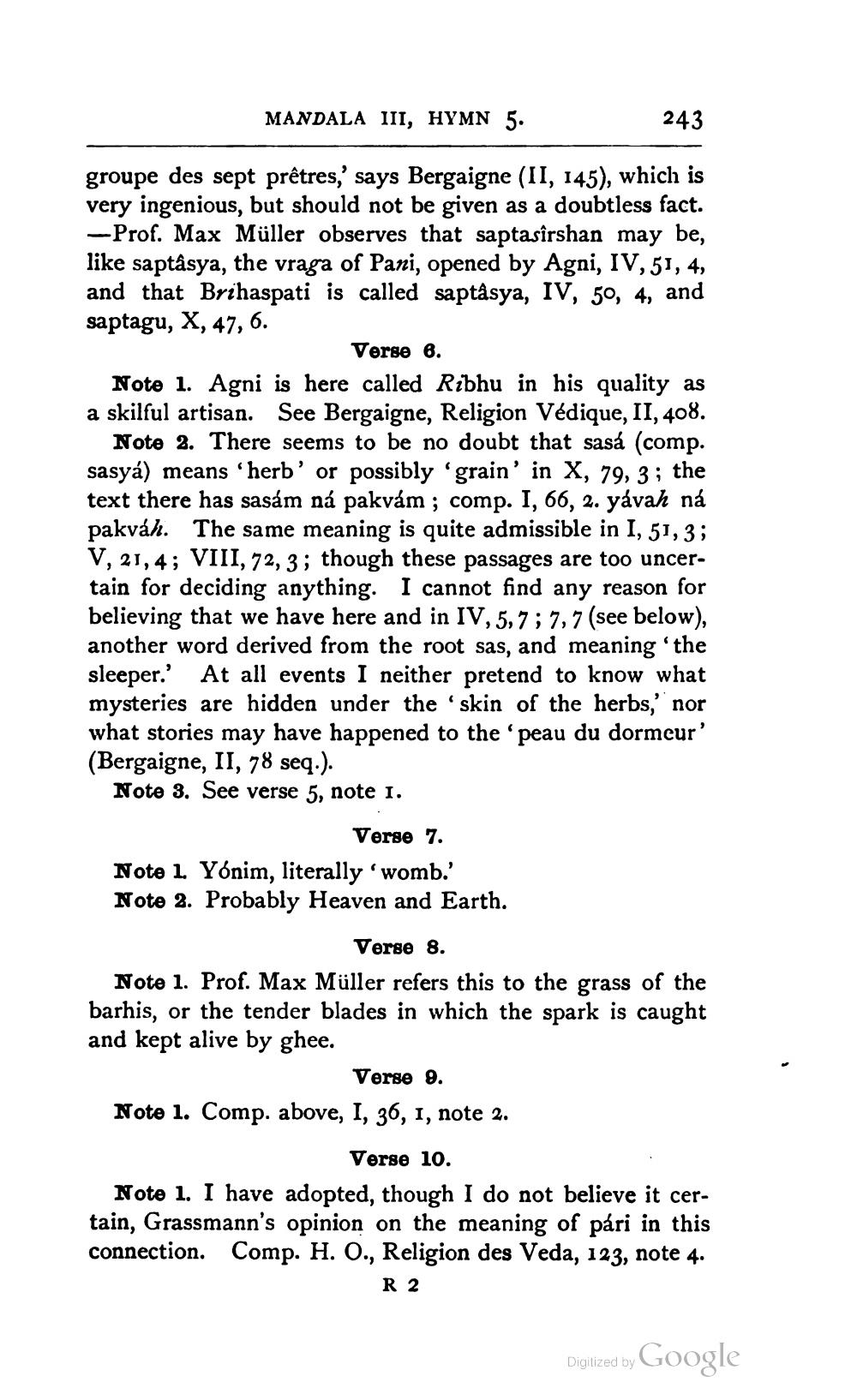________________
MANDALA III, HYMN 5.
243
groupe des sept prêtres,' says Bergaigne (II, 145), which is very ingenious, but should not be given as a doubtless fact. -Prof. Max Müller observes that saptasîrshan may be, like saptasya, the vraga of Pani, opened by Agni, IV, 51, 4, and that Brihaspati is called saptasya, IV, 50, 4, and saptagu, X, 47, 6.
Verse 6. Note 1. Agni is here called Ribhu in his quality as a skilful artisan. See Bergaigne, Religion Védique, II, 408.
Note 2. There seems to be no doubt that sasá (comp. sasya) means 'herb' or possibly 'grain' in X, 79, 3; the text there has sasám ná pakvám ; comp. I, 66, 2. yavah ná pakváh. The same meaning is quite admissible in I, 51, 3; V, 21, 4; VIII, 72, 3; though these passages are too uncertain for deciding anything. I cannot find any reason for believing that we have here and in IV, 5,7; 7,7 (see below), another word derived from the root sas, and meaning the sleeper. At all events I neither pretend to know what mysteries are hidden under the skin of the herbs,''nor what stories may have happened to the 'peau du dormeur' (Bergaigne, II, 78 seq.). Note 3. See verse 5, note 1.
Verse 7. Note 1. Yónim, literally 'womb.' Note 2. Probably Heaven and Earth.
Verse 8. Note 1. Prof. Max Müller refers this to the grass of the barhis, or the tender blades in which the spark is caught and kept alive by ghee.
Verse 9. Note 1. Comp. above, I, 36, 1, note 2.
Verse 10. Note 1. I have adopted, though I do not believe it certain, Grassmann's opinion on the meaning of pári in this connection. Comp. H. O., Religion des Veda, 123, note 4.
R 2
Diglized by Google




